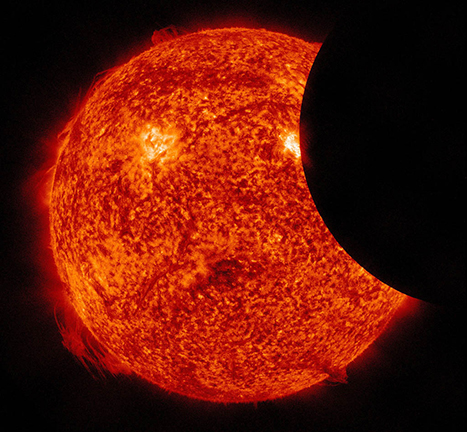|
You are viewing ARCHIVED content published online before January 20, 2025.
Please note that this content is NOT UPDATED, and links may not work. For current information,
visit https://www.nps.gov/aboutus/news/index.htm.

Photo by NASA/GSFC/SDO
A solar telescope and a telescope with a solar filter will be set up in front of the visitor center on the morning of the eclipse for visitors to view the approaching lunar shadow, partial eclipse, and decreasing lunar shadow starting at 9:00 am. At latitude 38 North Capitol Reef should experience approximately 82% obstruction beginning at 10:14 am MDT to 1:01 pm MDT The period of greatest eclipse will occur at 11:35 am MDT. The Capitol Reef Natural History Association will sell special eclipse-viewing glasses at the visitor center bookstore for a nominal cost. Never look directly at the sun without protective eyewear, as severe eye damage can result. Capitol Reef National park was designated an International Dark Sky Park in 2015. This event celebrates humanity’s connection to the solar system and exemplifies the efforts of the National Park Service to lead the way in protecting natural darkness as a precious resource. After the 2017 eclipse, the next total solar eclipse visible over the continental United States will occur in 2024. Rangers offer star gazing during new moon phases and guide moon walks during full moons. See program schedules at https://www.nps.gov/care/planyourvisit/things2do.htm and visit www.ida.org to learn about the International Dark Sky Association. For further information about Capitol Reef National Park, visit www.nps.gov/care, on Facebook at www.facebook.com/CapitolReefNPS/ Twitter www.twitter.com/CapitolReefNPS , and Instagram at www.instagram.com/Capitolreefnps .For more information about the eclipse, https://eclipse2017.nasa.gov/sites/default/files/interactive_map/index.html. |
Last updated: August 8, 2017
